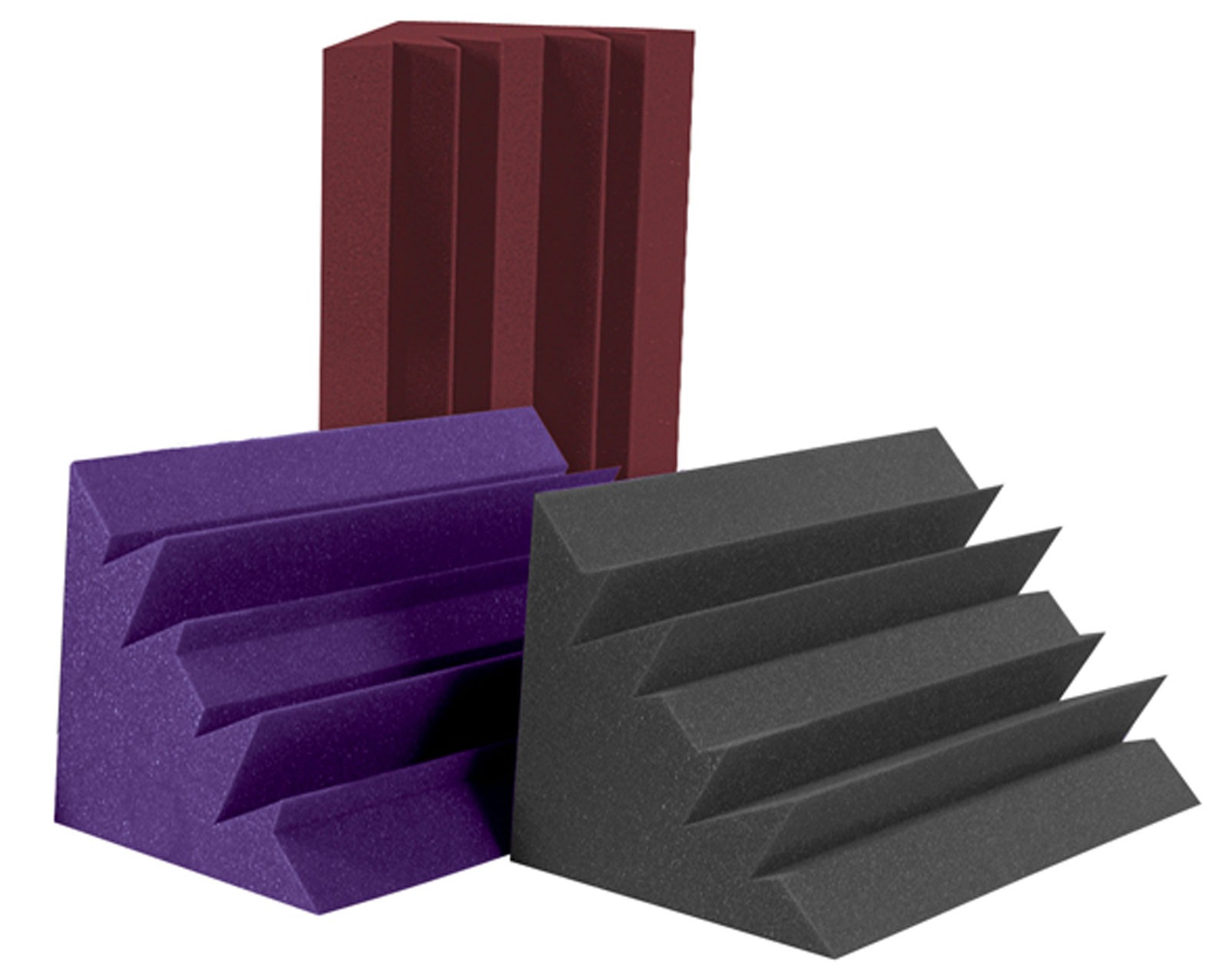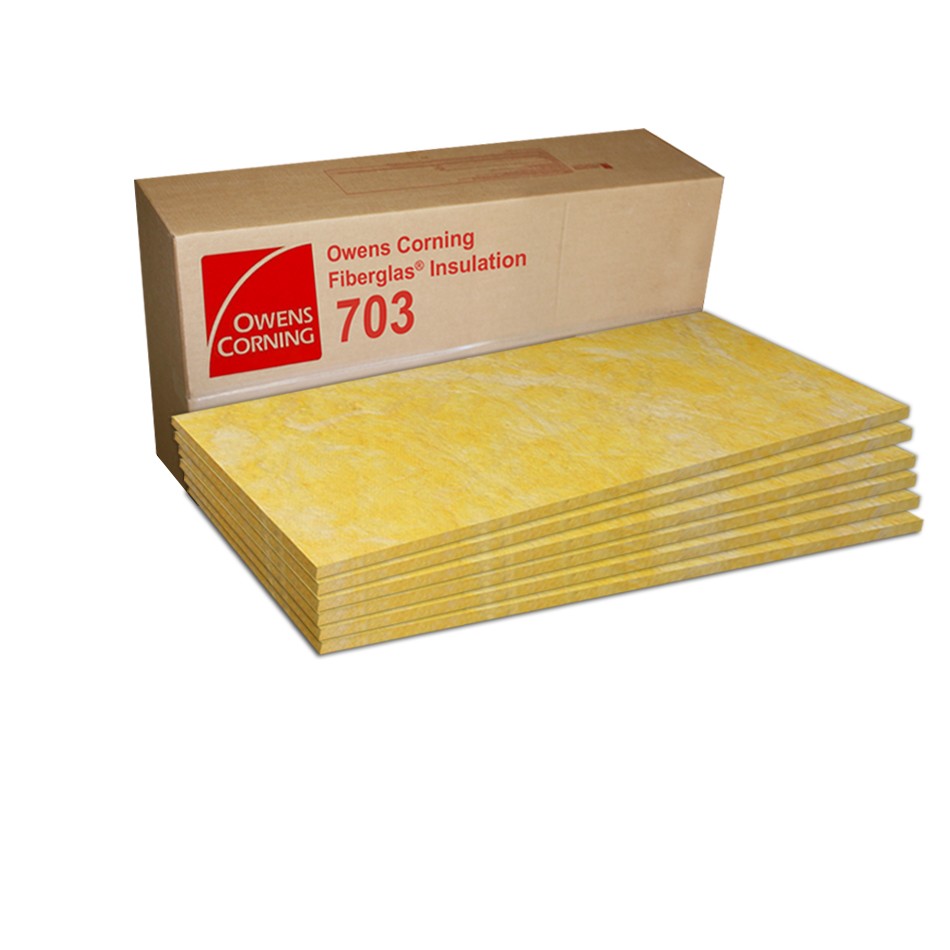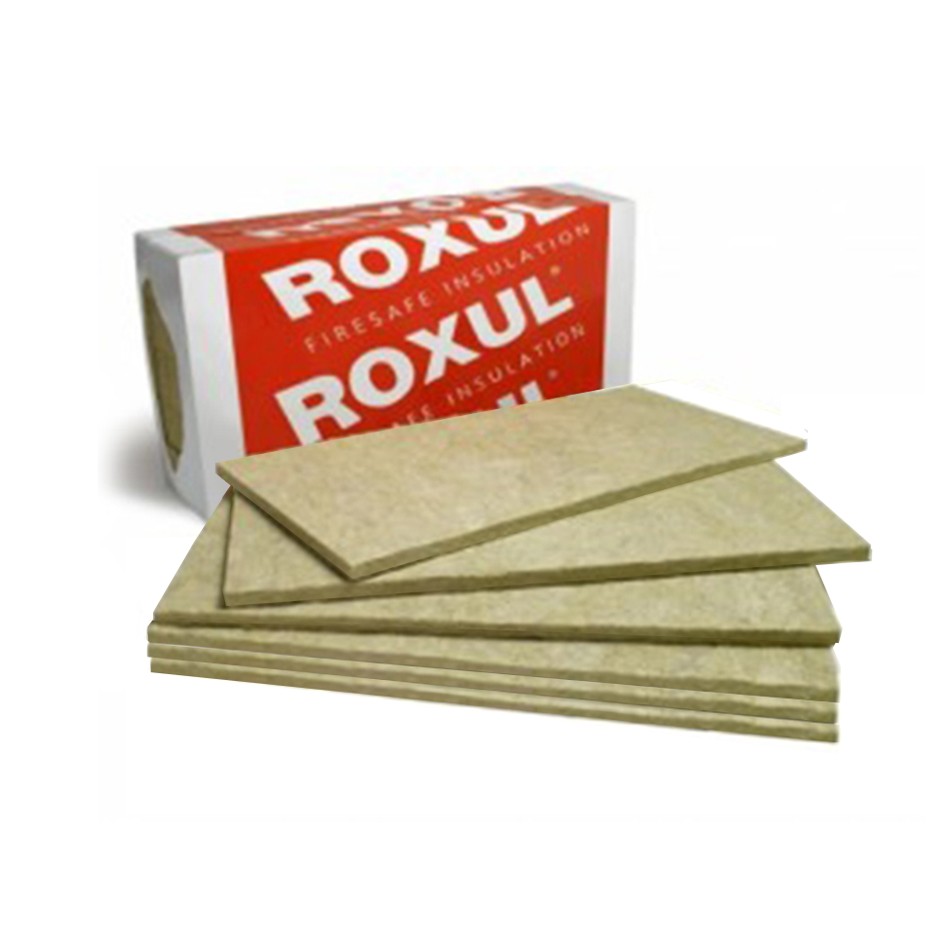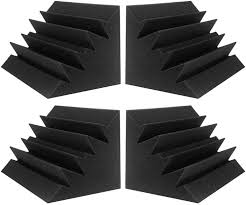
Auralex LENRD
Acoustic Absorption Bass Traps
Buy from Amazon $330 Buy from Guitar Center $330We receive a small kickback from our partners when you click through and purchase the great gear we recommend. Details
The Best Bass Traps
Auralex LENRD
- Don Makoviney
- Last Updated: September 14, 2020
When I need to tame room acoustics, I generally start with bass traps before I add wall treatment panels. This is because bass frequencies cause the most problems. When you need to acoustically treat your recording space, Auralex LENRD bass traps are the ones to get
Table of Contents
- Why do I need bass traps?
- What to look for in good bass traps
- Our pick
- Budget Bass Traps
- Make Your Own Bass Traps
- Learn more
- Conclusion
Why do I need bass traps?
Your recordings will sound better and listening back to your projects will sound better.
Bass traps tame a lot of low end frequencies which often cause most of your problems in small rooms. Most people (correctly) recommend starting with bass traps in the corners before you do the wall treatments. In fact, in some room problems can be solved with just bass traps only.
Ethan Winer explains the benefits of good bass traps:
If you walk into an empty room and clap your hands, you’ll hear a series of closely spaced echoes. Often these echoes also possess a discernable musical pitch, called ringing, especially if the room is small. Echoes and ringing are caused by sound striking the walls, and then bouncing back and forth between the opposite walls. Besides the obvious intrusion of echoes in a room designed for playing and mixing music, the ringing also causes certain frequencies to be emphasized. The time between the echoes and which frequencies are emphasized depend on the room’s shape and dimensions.
To avoid these problems, professional mixing rooms are designed to eliminate most reflections. Deadening the room helps you to hear any reverb and other effects being added to a mix, without being influenced by natural ambience within the room. It also kills the ringing along with the echoes, thereby minimizing the need for 1/3-octave equalizers. But proper acoustic treatment involves more than just eliminating the audible echoes and ringing, which impact only the midrange and upper frequencies. Unless your recording is limited to voice-overs and narration, it is just as important to eliminate the reflections that occur at low frequencies.
Bear in mind, it’s easy to get really, really, really into treating your room. So much so, that you may end up spending all your time fussing with your room and not getting any recording done. This website is dedicated to researching and testing so you can spend more time getting projects done. There are people whose entire career is just room treatment.
If you’re just starting out, getting the basics done right is the most important. You’ll find that you’ll always be tweaking and fine-tuning your room forever. And that’s just fine. Just don’t get so obsessed with room treatment you don’t get songs recorded and mixed.
You’ll learn a lot by just getting the basics in place. So start with our picks, and then branch out and upgrade from there, as needed.
What to look for in good bass traps
They should be proven to trap low end bass frequencies (typically under 150Khz) well.
Really that’s about it. Once you’ve installed your bass traps you’re ready to treat the higher frequencies in your room with some great acoustic treatment panels.
There are different philosophies about the best way to tune a control room, and no one method is correct. What you do – if you do anything at all – depends on your mindset, the size of your wallet, and perhaps the kind of music you produce. Many people are satisfied to adjust the tweeter level on the speakers if one is provided, and accept the results. If the speakers are biamped, the relative level between low and high frequencies can be further adjusted with the controls on the electronic crossover. Acoustic treatment as described in this article goes a long way toward eliminating response-skewing reflections, and with a properly treated room equalization may not be worth the effort and expense. Further, all monitor speakers have a “sound,” and it’s not wrong to pick a speaker that sounds the way you like and simply leave it at that.
Our pick
Chances are you’ve seen bass traps in recording spaces. If budget is not an option they are probably made by Auralex. They are (arguably) an industry standard. They work great, look nice, and have great warranty and upgrade options.
There’s not a lot to say about these. They’re a pretty un-exciting topic on which to write. But if you get them installed correctly, and finish out treating your room with some good acoustic wall treatment panels, you’ll have a recording and mixing space that sounds great.
Budget option
We like the Noble Acoustic Foam Bass Traps because we’ve heard them in use. When installed correctly, making sure you test your room, these will have no noticeable difference than our main pick.
Make Your Own Bass Traps
If you have some basic carpentry skills, you can make your own and save a considerable amount of money.
There are plenty of bass trap plans around the web. These ones from Ethan Winer, whom I’ve often quoted in this guide, are here.
These ones on the Gearslutz forum, using rockboard, are also pretty great.
Out of the two DIY options, I would suggest the Owens-Corning option, as it requires less carpentry and building skills. In fact, you could put up the panels in the corners and they wouldn’t look half bad just bare yellow.
The second option, as you will see in the Gearslutz rockboard tutorial, is going to be a little more messy and will require some tedious stacking and stringing them together. Unlike option #1, these will need to be covered, as the material is a bit messy.
Learn more
As mentioned at the beginning of this guide, it’s easy to get super obsessed with your room acoustics. That’s not a bad thing.
However, this guide is not a tutorial per se’. Once you figure out what you need in your room, these are the products you should get.
So, if you’d like to learn more about testing, and even how to get some free room treatment tools and software, these links should be pretty much everything you need to know. The list below includes diagrams, plans, shopping lists, and calibration tools:
- Bass trap placement guide
- Acoustic Room Treatment: Bass Traps
- Build a Better Bass Trap
- How To Tune Your Room
Happy recording!
Tell Me If There's A Deal For This
The Best Bass Traps
Auralex LENRD

Important Specs
| Lowest Frequency Absorption | 75Hz |
| NRC Rating | 1.35 |
| Fire Rating | Class B |
| more specs |
Synopsis:
Get these before you start worrying about wall panels. You'll find these will take care of most of your problems. Their warranty and NRC ratings are what put these a step ahead of the others.

DIY Option #1
Owens-Corning 703 2" Rigid Fiberglass Board
Just as effective as pre-built commercial bass traps, Owens-Corning rigid fiberglass board is a much cheaper option if you or a friend have some very basic construction skills. Check out the DIY section of this guide for links to plans and installation instructions.

DIY Option #2
Roxul Rockboard 80, Mineral Wool Board 2"
Also just as effective as the Owens-Corning option. Check out the DIY section of this guide for links to plans and installation instructions for this version of bass traps too.

Budget Bass Trap Option
JBER Foam Bass Traps
Slightly lower NRC rating than our main pick, but they're a fraction of the price. Amazons choice for a reason; the reviews speak for themselves.
Sources
-
Tim Perry, Arqen.com, 20140101
Bass Traps 101: Placement Guide“Small and midsize rooms naturally have a violently uneven low frequency response. That’s a tragic thing when you want to hear accurately. Without bass control your musical foundation (everything you hear below 300 Hz) is heavily distorted by acoustical chaos: room modes, standing waves, random wave interference, comb filtering and speaker-boundary interference response (SBIR).”
-
Ethan Winer, EthanWiner.com, 19950601
Build a Better Bass Trap: The Cost of Perfection“Although acoustic foam products are useful for absorbing midrange and high frequencies, they are relatively expensive: Sculpted foam two inches thick costs about five times more than type #703 one-inch rigid fiberglass board which is just as effective. (Rigid fiberglass is similar to the fluffy type used for home insulation, but it is much denser. A sheet of #703 one inch thick is equal in sound absorption to a much thicker batt of regular fiberglass.) Likewise, pre-built commercial bass traps are readily available, but they too cost many times more than the raw materials needed to build your own.”
-
Ethan Winer, EthanWiner.com, 19950601
Build a Better Bass Trap“If you walk into an empty room and clap your hands, you’ll hear a series of closely spaced echoes. Often these echoes also possess a discernable musical pitch, called ringing, especially if the room is small. Echoes and ringing are caused by sound striking the walls, and then bouncing back and forth between the opposite walls. Besides the obvious intrusion of echoes in a room designed for playing and mixing music, the ringing also causes certain frequencies to be emphasized. The time between the echoes and which frequencies are emphasized depend on the room’s shape and dimensions. To avoid these problems, professional mixing rooms are designed to eliminate most reflections. Deadening the room helps you to hear any reverb and other effects being added to a mix, without being influenced by natural ambience within the room. It also kills the ringing along with the echoes, thereby minimizing the need for 1/3-octave equalizers. But proper acoustic treatment involves more than just eliminating the audible echoes and ringing, which impact only the midrange and upper frequencies. Unless your recording is limited to voice-overs and narration, it is just as important to eliminate the reflections that occur at low frequencies.”
Important Specs
| Lowest Frequency Absorption | 75Hz |
| NRC Rating | 1.35 |
| Fire Rating | Class B |
| more specs |
Follow MSCGR
Talk To Us
Did we miss a recommendation? Is there something you'd like to see us review? Typos? Mistakes? If so, drop us a line.



